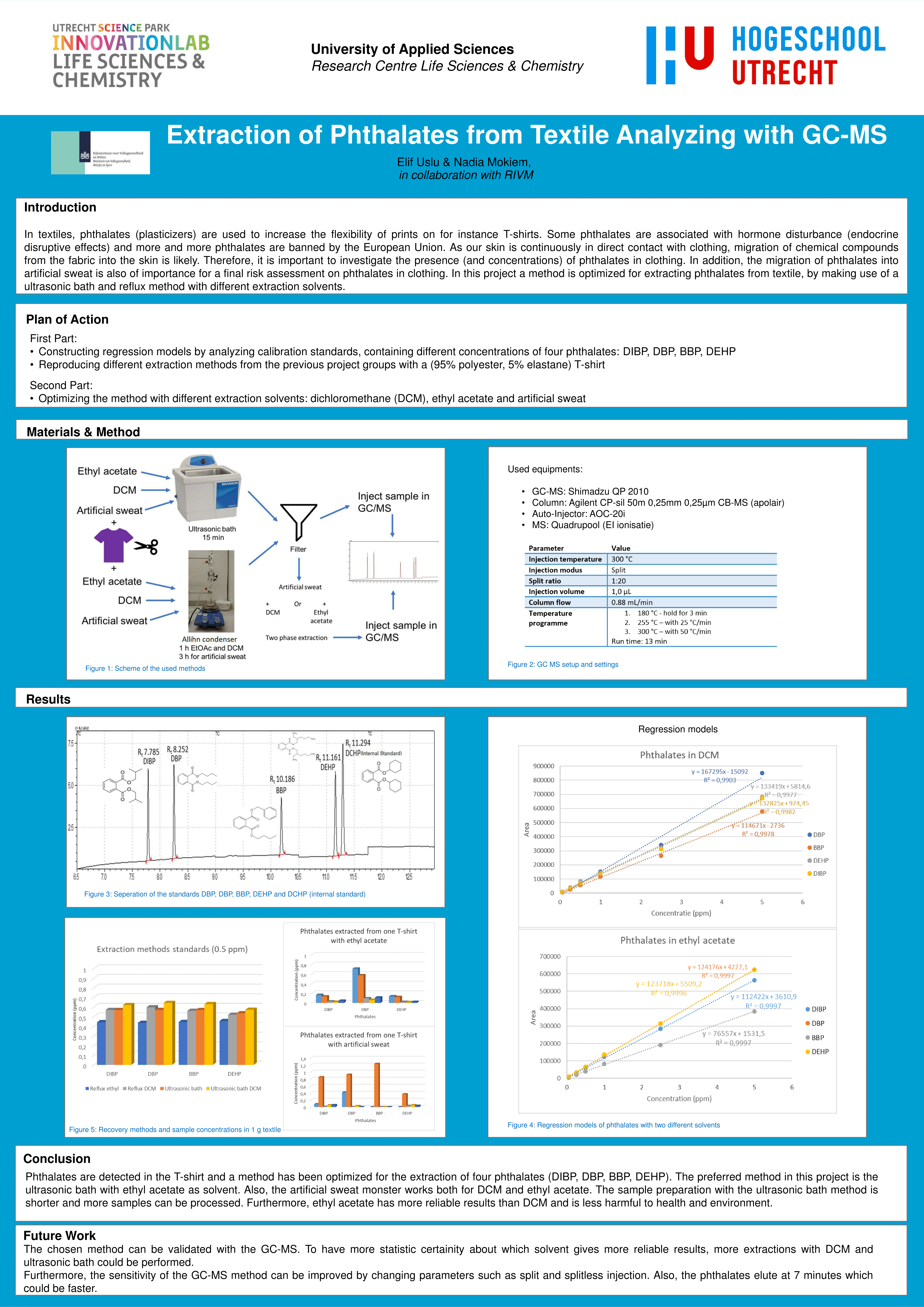Question:
In textiles, phthalates (plasticizers) are used to increase the flexibility of prints on for instance T-shirts. Some phthalates are associated with hormone disturbance (endocrine disruptive effects) and more and more phthalates are banned by the European Union. As our skin is continuously in direct contact with clothing, migration of chemical compounds from the fabric into the skin is likely. Therefore, it is important to investigate the presence (and concentrations) of phthalates in clothing. In addition, the migration of phthalates into artificial sweat is also of importance for a final risk assessment on phthalates in clothing. In this project a method is optimized for extracting phthalates from textile, by making use of a ultrasonic bath and reflux method with different extraction solvents.
"Through this project we've been able to develop ourselves in research and communicative skills" - Elif and Nadia, students working on this project
Approach:
Constructing regression models by analyzing calibration standards, containing different concentrations of four phthalates: DIBP, DBP, BBP, DEHP.
Reproducing different extraction methods from the previous project groups with a (95% polyester, 5% elastane) T-shirt.
Optimizing the method with different extraction solvents: dichloromethane (DCM), ethyl acetate and artificial sweat
Result:
Phthalates are detected in the T-shirt and a method has been optimized for the extraction of four phthalates (DIBP, DBP, BBP, DEHP). The preferred method in this project is the ultrasonic bath with ethyl acetate as solvent. Also, the artificial sweat monster works both for DCM and ethyl acetate. The sample preparation with the ultrasonic bath method is shorter and more samples can be processed. Furthermore, ethyl acetate has more reliable results than DCM and is less harmful to health and environment.


